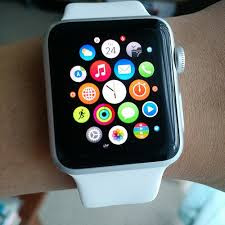IMB unveils "the world's smallest computer" ever designed
The American computer company IBM has just developed an incredible miniature computer, no bigger than a grain of coarse salt. Despite its millimeter side, the machine is relatively efficient and able to ensure its own power supply. The miniature camera is not intended to equip our offices, but should be integrated with everyday objects to ensure their traceability.
IBM comes to put its salt in the world of computing. Finally, a "grain of salt" of a kind a bit special, since it is ... a computer! Its designers have just presented it at a conference held on March 19 in Las Vegas, entitled "Think 2018".
No bigger than a grain of coarse salt, the machine developed by the famous American multinational is only one millimeter wide, making it the smallest computer in the world. It beats the previous record held by the Michigan Micro Mote, a device with a width of two millimeters, presented in 2015. This new device, to say the least compact, does not lack any power.
Equipped with a processor consisting of hundreds of thousands of transistors, the miniature computer is as efficient as the heavy and bulky machines of the 1990s. And its progression should accelerate in the years to come, as promises IBM: "That could change our lives in the next five years. "
For the moment, the device has a static type of random access memory, SRAM, which makes it possible to record data without having to refresh the saved content. It nevertheless has the disadvantage of requiring a permanent power supply, otherwise the information would disappear permanently.
An autonomous computer in energy
To ensure the production of this energy, the designers of the mini-computer have managed to integrate on its millimeter surface a photovoltaic cell. A component comparable to those that cover the solar panels installed on the roofs to produce domestic electricity.
In addition to these sensors, the miniature device is also equipped with a device that allows it to communicate to exchange data. The transmission of the signal is provided by an LED and a photodetector, respectively able to emit and receive the light pulses used to code the data.
What could this tiny computer do for that? A priori not to equip our offices, but rather to be used within logistics management systems, especially for protection against counterfeiting.
Applications in the field of logistics
IBM is embarking on the development of product tracking and authentication methods. This computer the size of a grain of salt could thus serve as "crypto-anchor", in French a "cryptographic anchor" devised by the American company to guarantee the safety of objects during their transport.
Clearly, this tiny computer could allow to store, process and transmit data on a product for example to know its origin or date of manufacture. The prospect is far from being utopian, especially as the very low cost of the device should certainly allow it to prevail on the market: the millimetric computer of IBM should cost only ten centimes of dollars , about eight cents.
"Over the next five years, cryptographic anchors - such as ink dots or tiny computers smaller than a grain of salt - will be embedded in everyday objects and devices," said the director of the company. search for IBM Arvind Krishna. In the future, it may well be that hundreds of "grains of salt" invade our daily lives.



Comments
Post a Comment